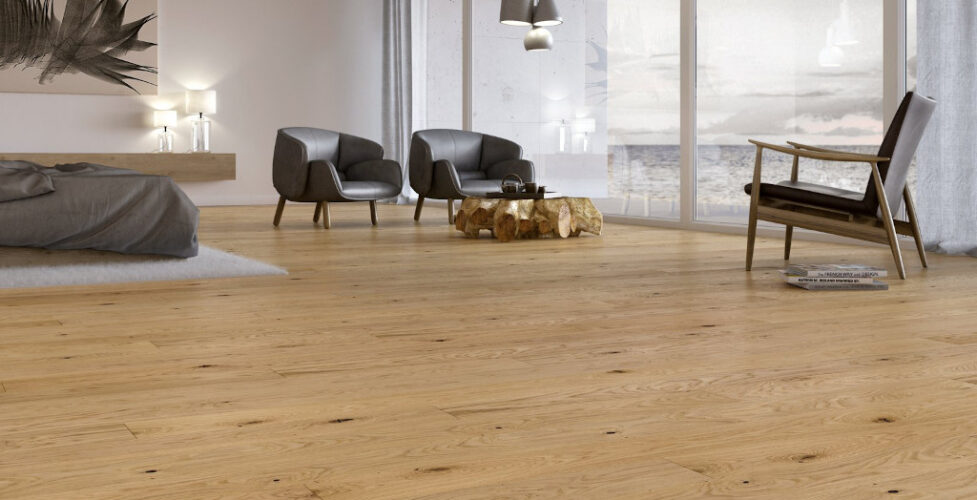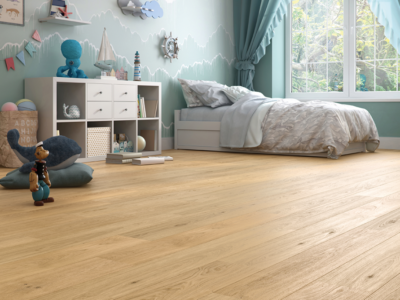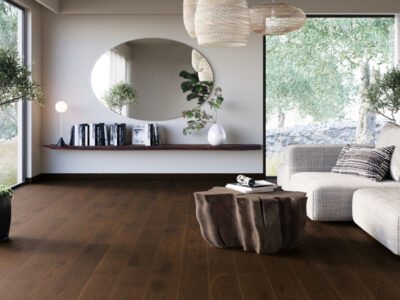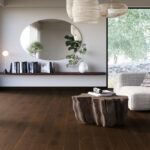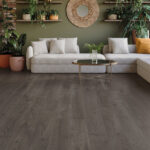We are paying increasing attention to eating healthily, choosing cosmetics that do not adversely affect the body or the environment, and buying toys and accessories that are safe for the health of toddlers. In other words: we consciously avoid harmful substances in our environment. But did you know that many of such substances can be found in floors? Read on and learn how to choose healthy flooring, and why it is important that finishing materials do not contain formaldehyde, phthalates or toxic substances.
Harmful substances in floors
Many floors contain substances that can have a harmful effect on health. Obviously, for a floor to be approved for use, it must meet the emission standards of the respective harmful substance; hence we can find, for example, information that the material in question is a low-emission material. What does this mean? This means that the floor emits minimal amounts of harmful VOCs into the air.
Also, it is important to know that standards are set for a specific region in the world (e.g. they are different in the US and the EU); besides, they are updated from time to time, so a floor that may have been labelled low-emission 15 years ago, might not carry the same label today.
Furthermore, standards are different for toys and children’s items, e.g. these should be absolutely free of phthalates, which are permitted in flooring to a certain extent. After all, a young child spends plenty of time on the floor, which serves as his or her “playground.” For this reason, among others, more and more parents are looking for floors free of harmful substances.
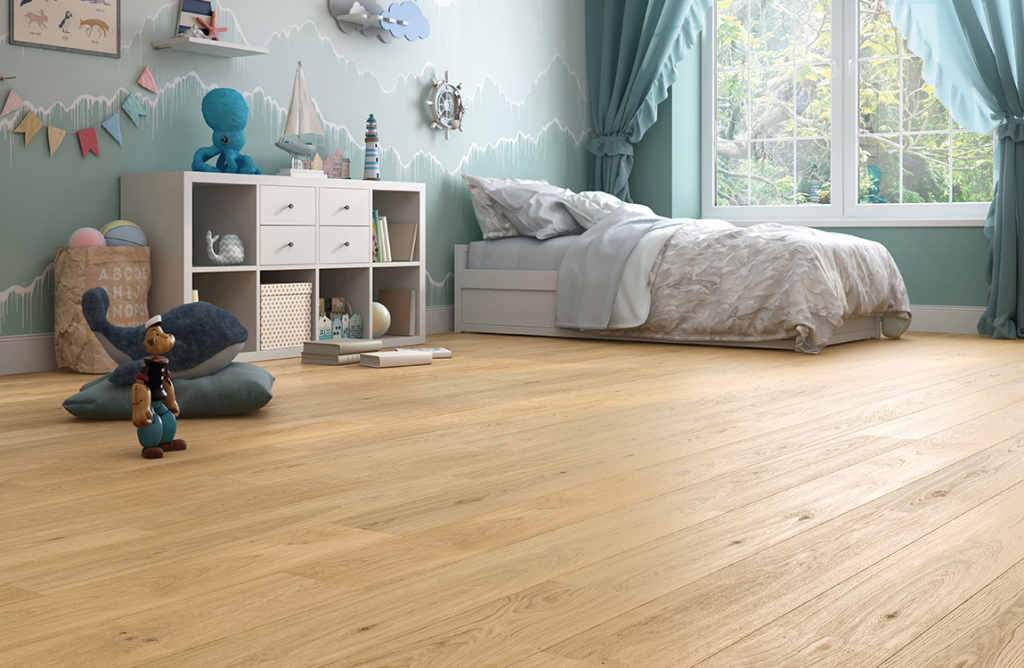
It is also noteworthy that the emissions of harmful substances contained in floors can increase over time. Besides, if such a material is installed over underfloor heating, the latter is likely to amplify harmful emissions.
Hence, the healthiest choice is flooring that simply does not contain such substances. What compounds should be avoided in the first place? Below we list the most popular ones.
Formaldehyde
Formaldehyde is a chemical substance commonly used in the production of building materials, including laminate and vinyl flooring. Formaldehyde can be released from floors in gaseous form, causing eye, nose and throat irritation, as well as leading to more serious health problems such as allergies, asthma or even cancer. It must be clearly emphasised that in legal terms formaldehyde is classified as a carcinogen.
Phthalates
Phthalates are another type of chemical compounds that are often added to plastic materials, but also to vinyl flooring and PVC carpets. They can be released into the air in a process known as gaseous emissions. Phthalates are suspected of having a negative effect on the endocrine system, and their presence in the air can be harmful especially to children and pregnant women.
Solvents
Some floors may be varnished or impregnated with chemical solvents, which may contain toxic substances such as benzene or toluene. Emissions of these substances can lead to indoor air pollution and serious health problems.
Varnishes and paints of dubious quality
Some floors are coated with a layer of low-quality varnish or paint, which may also contain harmful chemicals. Their emissions into the air can pose a health risk, especially in the case of long-term exposure, and as we know – we install floors for years.
How do you choose a healthy floor?
You already know what substances to avoid, so it’s time to learn 3 rules that will make it much easier for you to choose a healthy floor.
1. Choose natural materials
When choosing flooring, look above all for natural materials that are both health- and eco-friendly. These include wood and stone.
However, marble, granite, travertine or quartzite are very expensive, so we rarely see them on floors. Besides, they are also quite cold to the touch. And so wood, in the form of layered or solid boards, reigns supreme among natural finishing materials.
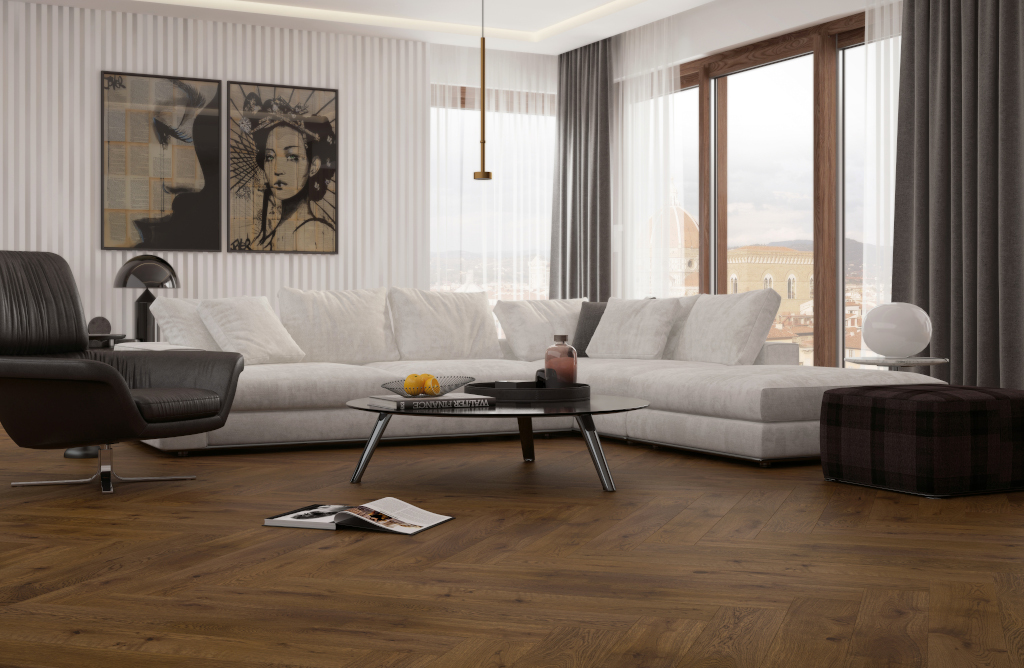
2. Check certificates
Before buying flooring, make sure that it is certified to comply with safety standards, and preferably to be free of harmful substances. Visit the manufacturer’s website to see what certifications they boast.
3. Get to know the composition of the floor
Try to choose flooring whose composition is clearly defined and which does not contain chemicals potentially harmful to health. Unfortunately, as regards the packaging of panel flooring, you will not find there composition information similar to the ingredients information found on food or cosmetic products, but the manufacturer’s website often provides information on what is used to produce the material.
In addition, you will easily find information about which components make up the building material. For example, vinyl flooring is made of polyvinyl chloride, which in turn is made by combining petroleum with salt. Ceramic tiles are usually made of a mixture of clay and mineral additives, which is glazed and fired.
Remember that even if you choose a natural material, it may be finished or combined using products (varnish, adhesive, etc.) that contain substances potentially harmful to health. The healthiest choice would therefore be floors treated with eco-friendly oils and varnishes.
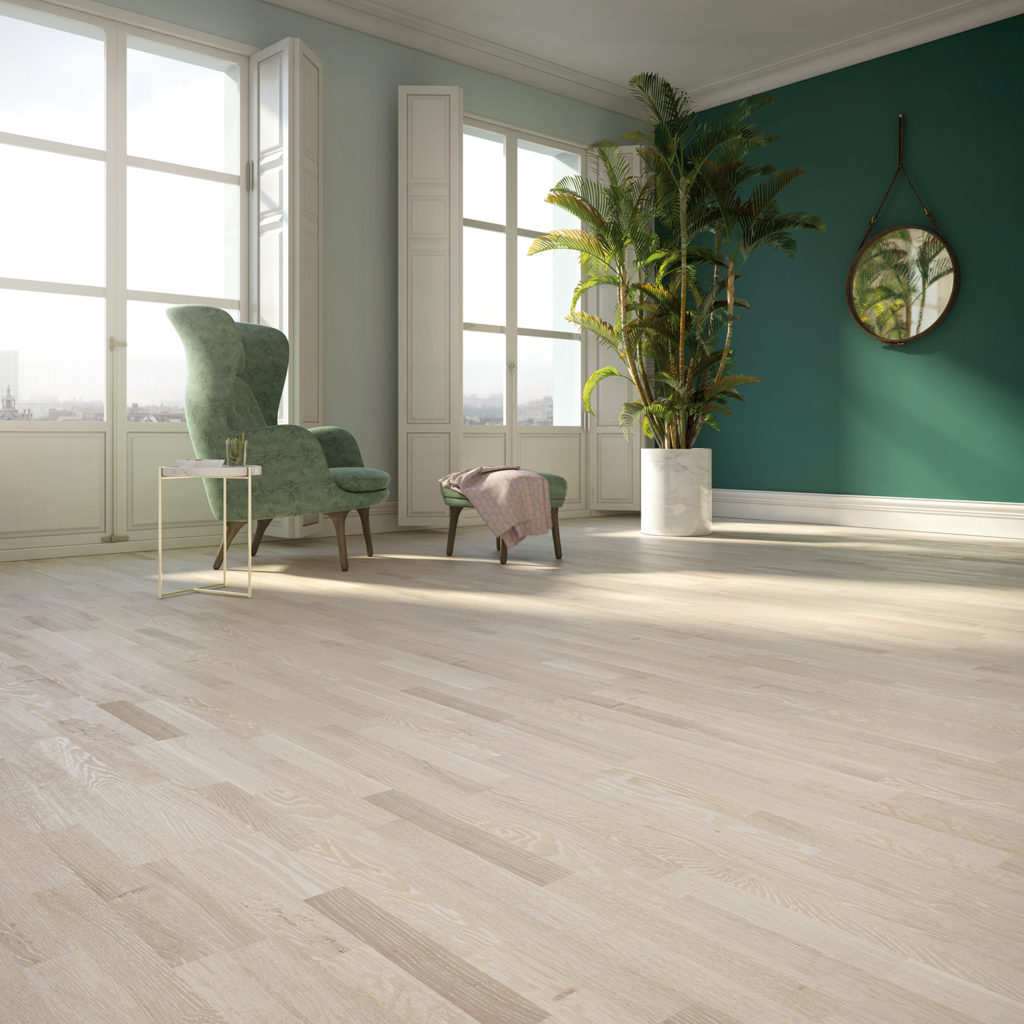
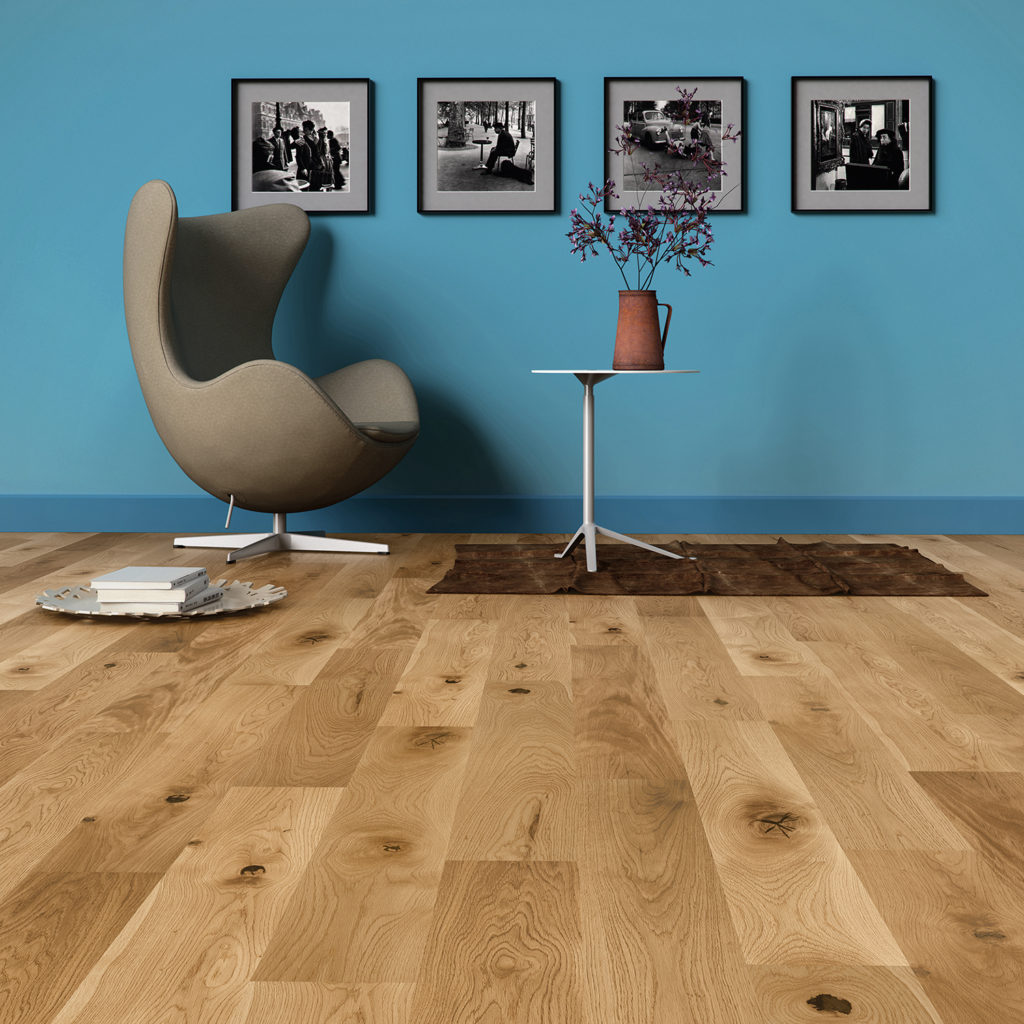
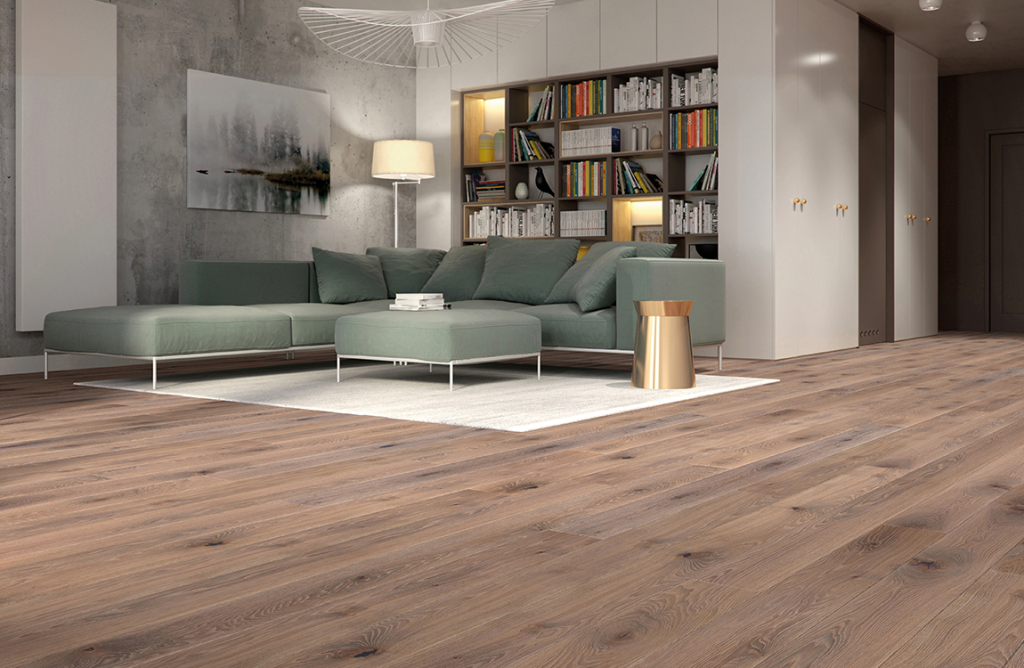
It is noteworthy that it is extremely important what components the flooring manufacturer uses. In the pursuit of ever-lower prices, it happens that products with components of unknown origin and brand are offered on the market; these may contain dangerous substances released over time.
What floors are considered healthy?
The healthiest floors are those that:
- are made of natural materials,
- are protected with eco-friendly varnishes or oils, or with a health-neutral material,
- in the case of layered products, they have been bonded together with a binder (most often adhesive) that does not contain substances harmful to health.
This is how Baltic Wood floors are made. The main material is wood (usually oak or ash), obtained from certified forests, including those FSC® certified. As regards suppliers of chemical components (adhesives, varnishes, oils and stains), we choose reliable manufacturers that can boast environmental certification.
Baltic Wood floors are recommended even for allergy sufferers and asthmatics, and of course for all those who want their home or apartment to have a healthy micro-climate.

